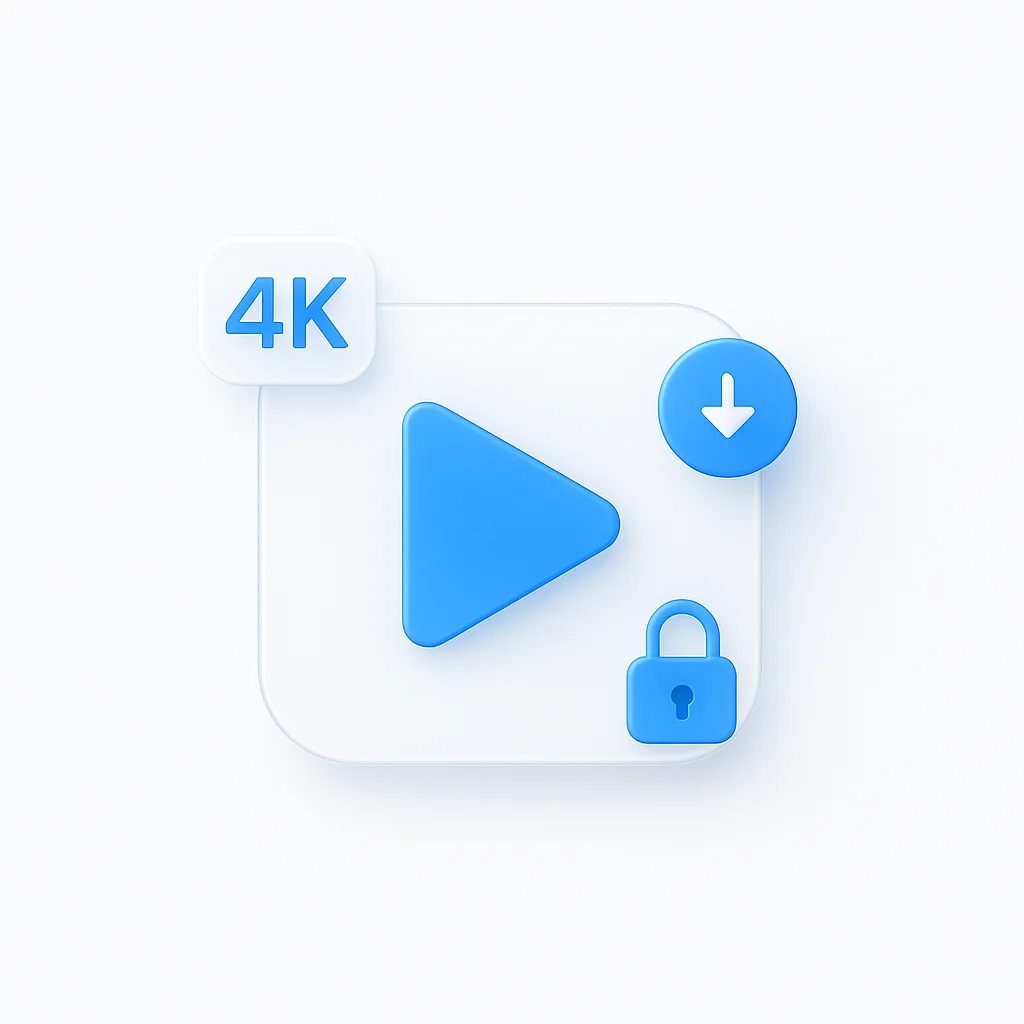Hast du dich jemals gefragt, was du mit einer VTT-Datei anfangen sollst? Diese Dateien enthalten den Schlüssel zu Untertiteln und Untertiteln für Online-Videos, aber es kann ein Rätsel sein, sie zu entschlüsseln. Dieser Leitfaden wird Licht auf VTT-Dateien werfen und erklären, wie man sie öffnet, um sowohl den Textinhalt anzuzeigen als auch das Videoerlebnis zu verbessern.
Einführung
Hast du jemals eine Datei mit der Erweiterung „.vtt“ gefunden und dich gefragt, was sie tut? Diese Dateien, die als VTT-Dateien oder WebVTT-Dateien bekannt sind, spielen eine wichtige Rolle in der Welt der Online-Videos. Sie fungieren als Container und speichern die Untertitel, die zusammen mit dem Videoinhalt auf dem Bildschirm angezeigt werden.
VTT-Dateien bieten Zuschauern eine Fülle von Vorteilen, insbesondere für diejenigen, die möglicherweise zusätzliche Hilfe beim Verständnis des Videos benötigen. Sie können das Spiel verändern für:
- Hörgeschädigte: VTT-Dateien stellen Untertitel bereit, die gesprochene Dialoge und Audiosignale als Text anzeigen und sicherstellen, dass jeder den Videoinhalt genießen kann.
- Zuschauer, die mit der Sprache des Videos nicht vertraut sind: Untertitel, die in VTT-Dateien angezeigt werden, können die Sprachbarriere überwinden, sodass Zuschauer Videos in einer Sprache verfolgen können, die sie lernen oder die für sie völlig neu ist.
- Jeder, der versucht, mit einem schnellen Dialog Schritt zu halten: Hast du jemals eine wichtige Zeile in einem Film oder einer Präsentation mit schnellen Reden verpasst? VTT-Dateien eilen zu Hilfe! Untertitel stellen sicher, dass du jedes Detail erfasst, wodurch die Notwendigkeit, zurückzuspulen, minimiert und dein Vergnügen maximiert wird.
- Diejenigen, die auf komplexe Audioinhalte stoßen: Videos mit technischem Jargon oder starken Akzenten können von Untertiteln profitieren, die über VTT-Dateien angezeigt werden. Dies kann besonders in Lehrmaterialien oder Vorlesungen nützlich sein, bei denen Klarheit entscheidend ist.
Dieser Leitfaden richtet sich an diejenigen, die mit VTT-Dateien nicht vertraut sind. Wir werden untersuchen, wie man sie öffnet und effektiv nutzt, um ein inklusiveres und bereicherndes Videoerlebnis zu ermöglichen.
VTT-Dateien verstehen
VTT-Dateien können auf den ersten Blick etwas technisch erscheinen, obwohl sie das Potenzial haben, dein Videoerlebnis zu verbessern. Das Verständnis ihrer grundlegenden Struktur ist jedoch recht einfach! In diesem Abschnitt werden wir etwas tiefer in das Innenleben einer VTT-Datei eintauchen, aber du kannst ihn gerne überspringen, wenn du es kaum erwarten kannst, direkt in die Öffnungsmethoden einzutauchen.
Im Wesentlichen sind VTT-Dateien im Wesentlichen einfache Textdokumente. Das bedeutet, dass du sie mit jedem einfachen Texteditor öffnen kannst, z. B. mit Notepad unter Windows oder TextEdit unter Mac. Die Magie liegt jedoch darin, wie dieser Text formatiert ist. Eine VTT-Datei verwendet Zeitstempel zusammen mit dem eigentlichen Untertiteltext. Diese Zeitstempel geben die genauen Momente an, in denen jede Untertitelzeile auf dem Bildschirm erscheinen und verschwinden soll. Stell dir ein Drehbuch mit präzisen Anweisungen vor, um die Untertitel perfekt synchron zum Audiotrack des Videos anzuzeigen.
Hier ist ein vereinfachtes Beispiel dafür, was du in einer VTT-Datei sehen kannst:
00:00:10.000 --> 00:00:15.000 Dies ist die erste Untertitelzeile.****00:00:20.000 --> 00:00:25.000 Und hier kommt die zweite Zeile.
In diesem Beispiel würde die erste Untertitelzeile 10 Sekunden nach Beginn des Videos erscheinen und nach 15 Sekunden verschwinden. Als Nächstes würde die zweite Zeile bei der 20-Sekunden-Marke erscheinen und bei der 25-Sekunden-Marke verschwinden.
Durch Befolgen dieser Struktur stellen VTT-Dateien eine perfekte Synchronisierung zwischen den Untertiteln und dem Audio des Videos sicher und bieten ein klares und zeitgemäßes Seherlebnis.
VTT-Dateien öffnen: verschiedene Ansätze
Es gibt zwei Hauptwege, eine VTT-Datei zu öffnen, je nachdem, welches Ergebnis du erzielen möchtest:
1. Anzeigen und Bearbeiten des Textinhalts:
- Texteditoren: Die meisten Betriebssysteme werden mit vorinstallierten Standardtexteditoren wie Notepad (Windows) oder TextEdit (Mac) geliefert. Diese Anwendungen können VTT-Dateien öffnen, sodass du die Zeitstempel und Untertitel in einem übersichtlichen Format anzeigen kannst.
- Erweiterte Texteditoren: Für ein funktionsreicheres Erlebnis solltest du erweiterte Texteditoren wie Sublime Text oder Atom verwenden. Diese Programme bieten oft Syntaxhervorhebung, die verschiedene Elemente der VTT-Datei farblich kodiert, um die Lesbarkeit zu verbessern.
2. Verwenden der VTT-Datei mit einem Video:
- VTT-fähige Media Player: Verschiedene Media Player können VTT-Untertitel zusammen mit der Videowiedergabe anzeigen. Zu den beliebtesten Optionen gehören der VLC Media Player, MPC-BE und KMPlayer. Diese Player verfügen oft über integrierte Optionen zum Laden externer Untertiteldateien.
- Direkte Integration: Einige Videoplattformen wie YouTube und Vimeo ermöglichen es Erstellern, VTT-Dateien direkt hochzuladen. Diese Plattformen verwalten die Integration und zeigen die Untertitel automatisch an, wenn Zuschauer die Untertitel aktivieren.
Die richtige Wahl treffen: Texteditoren im Vergleich zu Media Playern
Die beste Methode zum Öffnen einer VTT-Datei hängt von deinem endgültigen Ziel ab. Hier ist eine Aufschlüsselung, die dir bei der Auswahl des richtigen Tools hilft:
1. Anzeigen und Bearbeiten des Textinhalts:
- Texteditoren: Wenn du einfach nur die Untertitel lesen oder die Zeitinformationen oder den Text selbst bearbeiten möchtest, ist ein Texteditor deine beste Wahl. Die meisten Betriebssysteme sind mit Standardtexteditoren wie Notepad (Windows) oder TextEdit (Mac) ausgestattet. Diese Anwendungen zeigen den Inhalt der VTT-Datei in einem klaren und lesbaren Format an, sodass du die Zeitstempel und Untertitelzeilen anzeigen kannst.
Vorteile:
- Einfach zu bedienen und auf den meisten Geräten verfügbar
- Ermöglicht die grundlegende Bearbeitung von Zeitstempeln und Text
Nachteile:
- Zeigt die Untertitel nicht neben dem Video an
- Begrenzte Funktionalität für erweiterte Bearbeitungsaufgaben
2. Verwenden der VTT-Datei mit einem Video:
- VTT-fähige Media Player: Möchtest du ein Video mit den entsprechenden Untertiteln ansehen? Dann bist du hier genau richtig: Media Player mit integrierter VTT-Unterstützung. Zu den beliebtesten Optionen gehören der VLC Media Player, MPC-BE und KMPlayer. Diese Player verfügen oft über Optionen zum Laden externer Untertiteldateien, sodass du die VTT-Datei nahtlos in die Videowiedergabe integrieren kannst.
Vorteile:
- Ermöglicht das Ansehen des Videos mit synchronisierten Untertiteln
- Praktisch, um Videoinhalte mit verbesserter Zugänglichkeit oder Verständlichkeit zu genießen
Nachteile:
- Erfordert einen VTT-fähigen Media Player
- Begrenzte Bearbeitungsfunktionen innerhalb des Media Players selbst
Direkte Integration: Einige Videoplattformen wie YouTube und Vimeo ermöglichen es Erstellern, VTT-Dateien direkt hochzuladen. Diese Plattformen verwalten die Integration und zeigen die Untertitel automatisch an, wenn Zuschauer die Untertitel aktivieren.
Im Wesentlichen sind Texteditoren ideal, um direkt mit dem Textinhalt der VTT-Datei zu arbeiten, während VTT-fähige Media Player die Lücke zwischen der Datei und dem Videoerlebnis schließen. Wähle die Methode, die deinen spezifischen Bedürfnissen am besten entspricht!
Zusätzliche Tipps
- Wir haben zwar die Methoden zum Öffnen von VTT-Dateien untersucht, aber hier sind einige zusätzliche Tipps, die dein Erlebnis verbessern können:
- Konfigurieren der Dateizuordnung: Für zusätzlichen Komfort ermöglichen dir die meisten Betriebssysteme, ein Standardprogramm so zu konfigurieren, dass VTT-Dateien automatisch geöffnet werden. Dadurch entfällt die Notwendigkeit, jedes Mal, wenn du auf eine VTT-Datei stößt, manuell ein Programm auszuwählen. Navigiere einfach zu den Einstellungen deines Systems und suche nach der Option „Standardprogramme“ oder „Dateizuordnungen“. Dort kannst du deinen bevorzugten Texteditor oder Media Player angeben, um VTT-Dateien automatisch zu öffnen.
- Online-Konverter (optional): VTT-Dateien sind weit verbreitet, aber in seltenen Fällen kann es vorkommen, dass du eine VTT-Datei in ein anderes Untertitelformat konvertieren musst, um sie mit einer bestimmten Software zu verwenden. Obwohl dies nicht immer erforderlich ist, sind Online-Konverter verfügbar, die diese Aufgabe ausführen können. Es ist jedoch wichtig zu beachten, dass diese Konverter Einschränkungen haben oder zusätzliche Schritte erfordern können. Wenn du dir nicht sicher bist, ob du einen Konverter benötigst, solltest du dich am besten auf die in diesem Handbuch beschriebenen Öffnungsmethoden konzentrieren.
Fazit
VTT-Dateien spielen eine entscheidende Rolle, wenn es darum geht, Videoinhalte online für ein breiteres Publikum zugänglich und verständlich zu machen. Sie bieten Untertitel, die Sprachbarrieren überwinden, komplexe Audioinhalte verdeutlichen und sicherstellen können, dass jeder das vollständige Erlebnis eines Videos genießen kann, unabhängig von seinen Hörfähigkeiten.
Die gute Nachricht ist, dass das Öffnen und Verwenden von VTT-Dateien ein unkomplizierter Vorgang ist! Egal, ob du einfach nur den Textinhalt als Referenz anzeigen oder die VTT-Datei verwenden möchtest, um Untertitel neben einem Video anzuzeigen, die in diesem Handbuch erläuterten Methoden bieten klare und zugängliche Lösungen. Indem du die Struktur von VTT-Dateien und die verfügbaren Methoden zum Öffnen verstehst, kannst du eine Welt bereichernder Videoerlebnisse genießen und sicherstellen, dass du nie den Faden verlierst.






